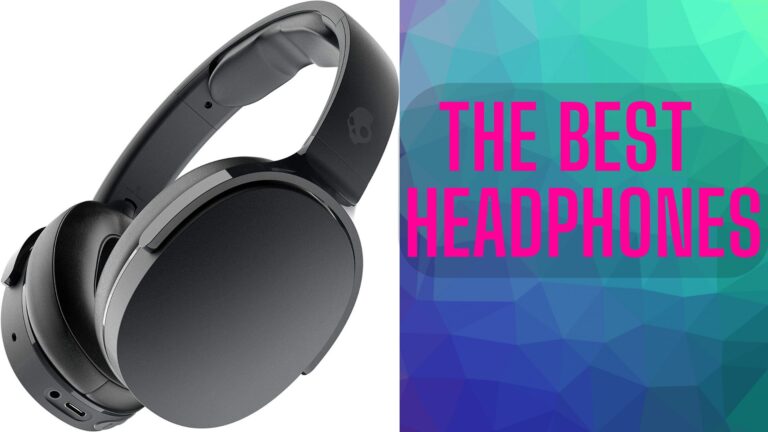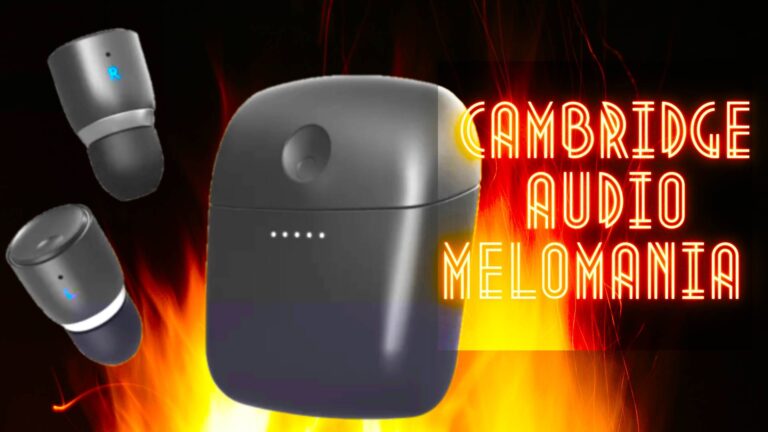Sony WH-1000XM5 Wireless Headphones review

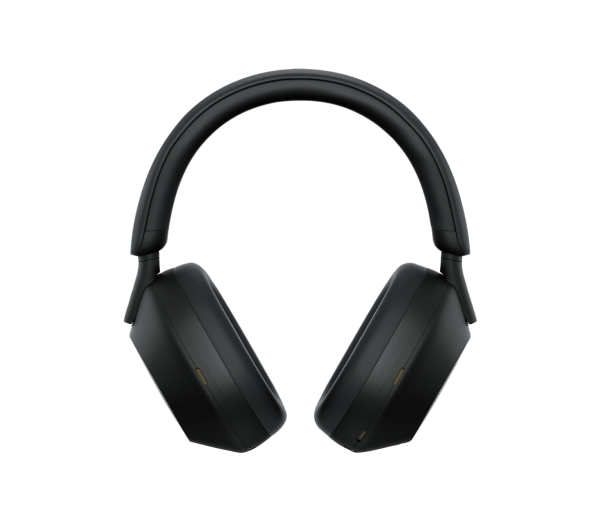
Sony WH-1000XM5
The Sony WH-1000XM5 headphones are now the best ones the company makes. They have replaced the models that came before them. Even though it’s still the best in its field, the WH-1000XM5 hasn’t changed much since its predecessor. Even though the WH-1000XM5 has fewer important new features than previous models, it is still the most advanced product of its kind on the market.The Sony WH-1000XM5 headphones are one of the most interesting pairs of active noise cancelling (ANC) headphones on the market right now because of their improved drivers, features, and style. It works well both when you are on the road and when you are at work.
BestMaxa Opinion

Thanks to their industry-leading noise-cancelling capabilities and well-balanced audio, the Sony WH-1000XM5 headphones are still the best in the world. But the Sony WH-1000XM5 headphones are a little trickier to market now because of their higher price tag and functionality that is identical to that of older generations.
Pros
- Stunning performance with great sound
- intelligent ambient features
- outstanding noise cancellation
- Excellent program that you’ll truly want to use
Cons
- Less portable is the new design.
- more costly than earlier models
- A little improvement over the still outstanding WH-1000XM4
- No water resistance yet
key Specifications about the Sony WH-1000XM5
- The headphones’ frequency response ranges are 20Hz-20,000Hz and 20Hz-40,000Hz, respectively, thanks to their 30mm dynamic drivers (when switched to LDAC codec, with a sampling of 990kbps).
- For outstanding noise cancellation, the 1000XM5 makes use of the built-in V1 processor, eight microphones (up from four in the XM4), and a new QN1 processor.
- The Bluetooth 5.2 connectivity on the 1000XM5 has a 10m operational range.
- It is capable of swiftly pairing with a supported smartphone thanks to Google’s Fast Pair function.
- SBC, AAC, and LDAC Bluetooth codecs are supported.
- Additionally, Sony has added multi-point connectivity, which enables you to pair the headphones with two devices at once, such as your laptop and smartphone.
- The “Headphones” app, which is accessible on both the Android and iOS operating systems, allows you to enable and disable functions.
- The ability to switch between devices effortlessly is made possible by the multi-point connectivity feature, but it has one drawback: it disables the LDAC codec, making it impossible to listen to high-resolution audio.
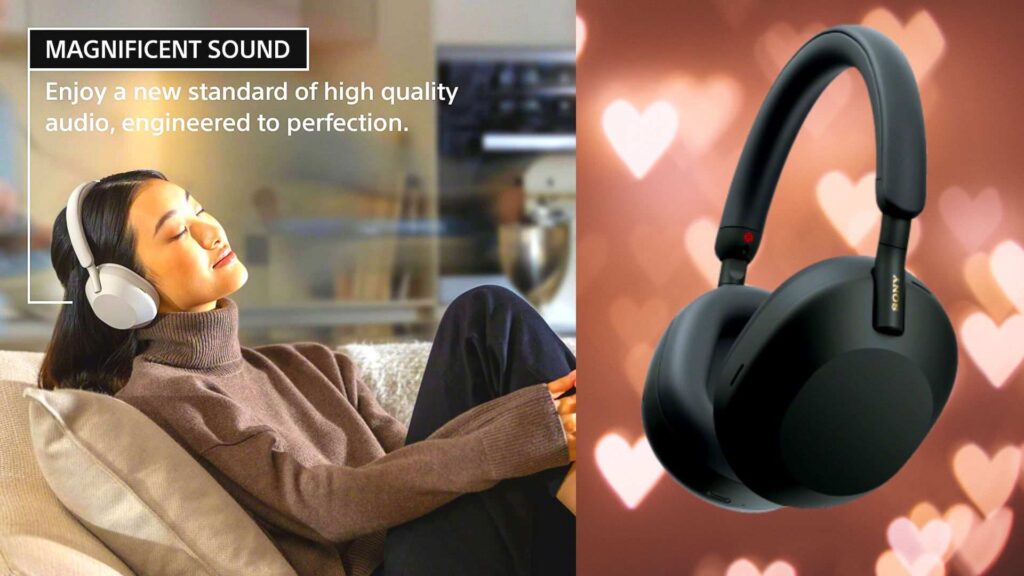
Features of the Sony WH-1000XM5
Key highlights
- The industry’s top active noise-cancelling technology
- choices for smart environmental awareness
- The app contains capabilities to safeguard your hearing and allows connections to two devices simultaneously.
Talk and conversations
- When it detects that you are talking, the speak-to-chat function switches to ambient sound mode and pauses the music.
- When you have finished speaking, playback will resume.
- Even though this is a useful function, it is not foolproof and can be set off by things like humming tunes or the sound of a person speaking in close proximity.Fortunately, you can turn this feature off within the app.
- Beamforming microphones and artificial intelligence algorithms allow it to recognize the user’s speech and choose between presets.
Autonomous Volume Adjustment
- This ingenious feature adapts your ANC settings to your current location and environment.
- To accomplish this, it observes your routine and eventually learns to identify the place and your tastes.
- For instance, it can figure out if you’re seated, moving around (walking, running, or commuting), and adjust the volume or activate active noise cancellation accordingly. Our testing revealed that this function performed without a hitch.
Further highlighted features
- The WH-1000XM5 has a rapid attention mode, where pressing your palm against the right earcup initiates the ambient sound mode and releases it when your palm is removed.
- Although it serves its purpose, it would have been preferable if pausing the song instead of just muting it was an option.
- With the Spotify Tap function, you can rapidly begin playing music from Spotify and switch between playlists by double-pressing the ANC/AMB button. (The Spotify mobile app is required for use.)
- The headphones’ built-in proximity sensor can automatically pause or resume playback whenever you put them on or take them off.
- The headphones will shut off after a few minutes if you don’t use them.
- Sony’s DSEE Extreme is still another option; it employs Edge-AI to instantly improve the quality of compressed music, reviving any sonic details that were lost during the compression process.
- The audio was marginally more detailed across the board when DSEE Extreme was on.
How do you feel about this in the Sony WH-1000XM5 Wireless Headphones?
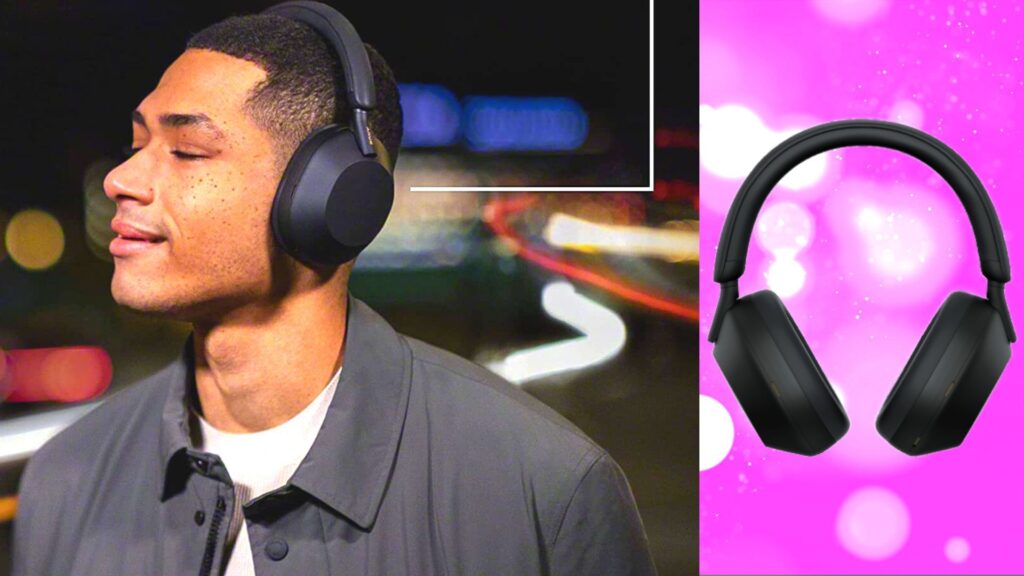
The WH-1000XM5 headphones continue the good work done by Sony’s WH series by adding noise-cancelling technology. This has been one of the most important things about the WH series for a long time. Even though it’s different from the WH-1000XM4 model, there isn’t a big difference between the two. This suggests that it must have been hard to beat the great performance of earlier models. But there is a small but noticeable change for the better.
The WH-1000XM4 was already good at reducing low-frequency sounds like the rumble of an airplane engine or the noise of public transportation, but the XM5s worked much harder in the higher frequency range. Part of the reason for this is that, even though the new 30mm driver is smaller than the older 40mm driver, it has a high-rigidity dome and a soft edge to soften some of the harshness of higher-pitched sounds. Even with the volume of my music turned all the way down, I couldn’t hear anything in London’s Paddington Station, which is known for being dirty and noisy. In fact, I didn’t hear much at all. It was a really great accomplishment.
Sony’s WH-1000XM5 headphones have a lot of smart features, but the active noise cancellation is the one that stands out. Many of these features work automatically without you having to do anything, making your listening experience better without making you do more work.
The first step is to know where you are. If you pair your WH-1000XM5 headphones with your smartphone, they may learn how you spend your days and adjust the Ambient Sound Control settings to match. This is possible when your device learns where you are and pairs with it. If the headphones notice that you are sitting in one place for a long time at home, they may adjust the noise cancellation to be less powerful than when you are at the office. This depends on the settings you have chosen. So that you can cross the street safely, it may also bring in more background noise from the outside when you go for a walk.
Another useful feature is Speak-to-Chat. If you start talking while the headphones are playing music, they will stop playing music and start mixing in background noise. This lets you talk without taking the headphones out of your ears. But just like the WH-1000XM4s that came before them, these headphones have a major flaw: if you start singing while the feature is on, the music will stop right away. This feature can be turned off, so even if you want to be the next Pavarotti, you can still work on your breathing while listening to music.
The WH-1000XM5s have a hidden sensor in the ear cup that stops the music when you take them off your head. This is a simple and useful feature that you can use right away. Because of this, the headphones are more comfortable to wear for long periods of time. If you leave them off for a while, they will turn off completely on their own, which will help the battery last longer. You can also connect to two different devices at the same time and switch between them based on what’s happening on each, such as making a notification more important. Thanks to this, you can now connect to two things at once.
Users can change and customize a lot of these things with the help of the companion app, which is much more useful than other software of this type. There are numerous ways to customize the noise-cancelling levels and location-aware settings that the app can be configured to change automatically based on how you use the headphones and where you are. There is also a responsive equalizer with a bass boost function that really changes how the headphones sound (though we were very happy with the default tuning). We were happy with the headphones’ settings from the factory, though.
Last but not least, voice assistants and the wake words they use are better supported. Alexa and Google Assistant can both be called up without using your hands by using their own trigger instructions. Once they are called, they can be used to do many things, like make and take calls, read texts and notifications, play music, and more.
Design of the Sony WH-1000XM5
- brand-new style
- Although the design avoids wind distortion, it can no longer be folded into a small space.
- ideal for extended listening sessions
- No water resistance yet
After two generations of over-ear headphones that were almost exactly the same, the WH-1000XM5 headphones have a very different look from their predecessors.
The WH-1000XM5 headphones are a little bit more rounded than their predecessors. This is the easiest way to tell them apart from their predecessors. There are less obvious joints, mic ports that cancel out noise, and a thinner headband with extra leather-like material to hide its joints and extension points. Overall, it’s a little bit simpler and better put together. The area where your ears are supposed to rest is also a little different from the WH-1000XM3 and WH-1000XM4 headphones. It’s more of a squat ovoid. Even though we haven’t tested the slide-out extension points to their limits yet, they seem to be stronger than older models. There are also fewer places where there is pressure that could break off. This was another problem with older models that were used a lot.
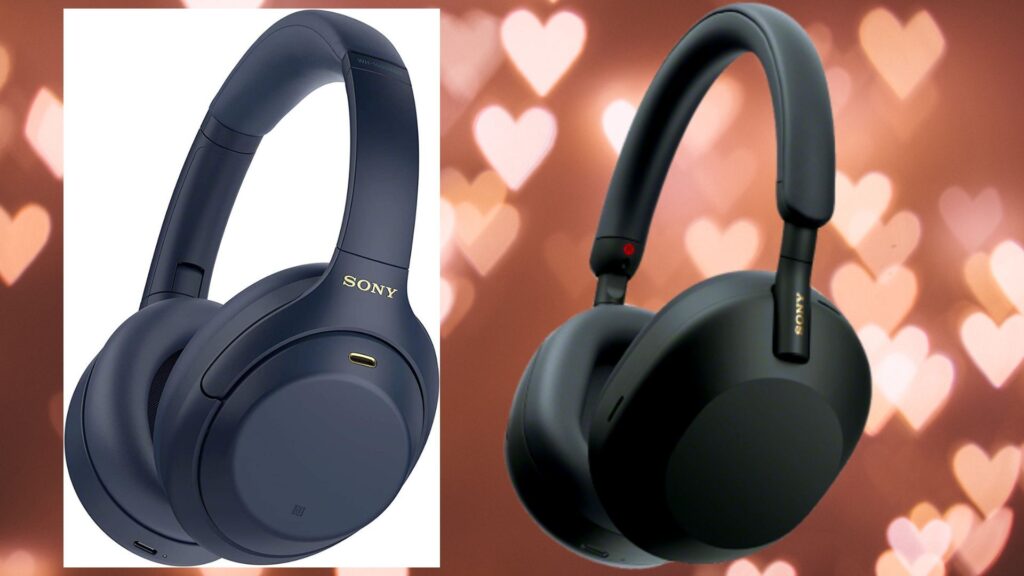
The controls are almost identical to those of the 1000XM4 headphones. In addition to the intelligent context-aware auto controls (which we will go over in the ‘Features’ portion of this review), there are two physical buttons located on the edge of the left ear cup. The first toggles between noise cancelling and ambient awareness settings, and you can now enable Spotify Tap with only a couple or three taps of the ANC button. This allows you to start playing music from the music streamer without having to take your phone out of your pocket. The second button is the power button, and in order to engage the Bluetooth pairing mode, you need to maintain holding down the power button. You’ll also find that the exterior of the right ear cup has touch sensitivity. You can adjust the volume by swiping up and down on it, pausing the audio by double tapping it, and answering calls by covering it with your palm. This instantly switches you to an ambient awareness mode that lets in sounds from the outside. Additionally, there is a charging connector that uses USB-C located on the right cup, and a 3.5mm headphone jack located on the left cup.
However, there are certain shifts that may not be appreciated as much as others. Unfortunately, this product does not provide any kind of protection for water, which is really disappointing. Since the headphones cannot fold in on themselves anymore, their portability is not exactly what it used to be. While the headband is more disguised and blended into the general design aesthetic of the headphones, it seems to have less cushioning than prior Sony headphones in the series. This is despite the fact that it is better hidden.
However, it may be rather beside the point since, in our experience, they are not any less comfortable as a consequence, and they would gladly sit on your head even for extended periods of time as you listen to music. There is a generous amount of cushioning around the ears, and the cups can twist and pivot to accommodate a range of head sizes. The band applies just the appropriate amount of clamp pressure to keep them in place, so you won’t feel like your brain is being forced out of your ears. Additionally, this headband now expands in a seamless manner, as opposed to the previous iterations, which extended in a stepwise manner.
Even though these headphones have more features than the ones they replaced, they are lighter than the ones they replaced. They are only 250g, which is 4g less than the last model. Also, both their building materials and their packaging are made from recycled ABS polymers from car parts. This makes them look like a company that cares about the environment more.
If you wear headphones outside on a windy day, the noise-canceling feature may not work as well as it should. This is done so that the shape of the headphones can be made more curved, which will reduce the amount of wind drag. Even though we haven’t gone right into the path of a storm, a more aerodynamic shape should help to lessen its effects. On a windy day in London’s Greenwich Park, we found that to be true.
The second obvious change is that there are now two microphones, which are located in the headphones. It also doubles the number of beamforming mics near the user’s lips for calls, from two on the WH-1000XM4s to four on the WH-1000XM5s. This gives the onboard noise cancelling processors—yes, there are two inside the headphones—more audio data to analyze and improve the active noise canceling. The WH-1000XM5s can be used right now. Some of our more knowledgeable friends thought the call was clear.
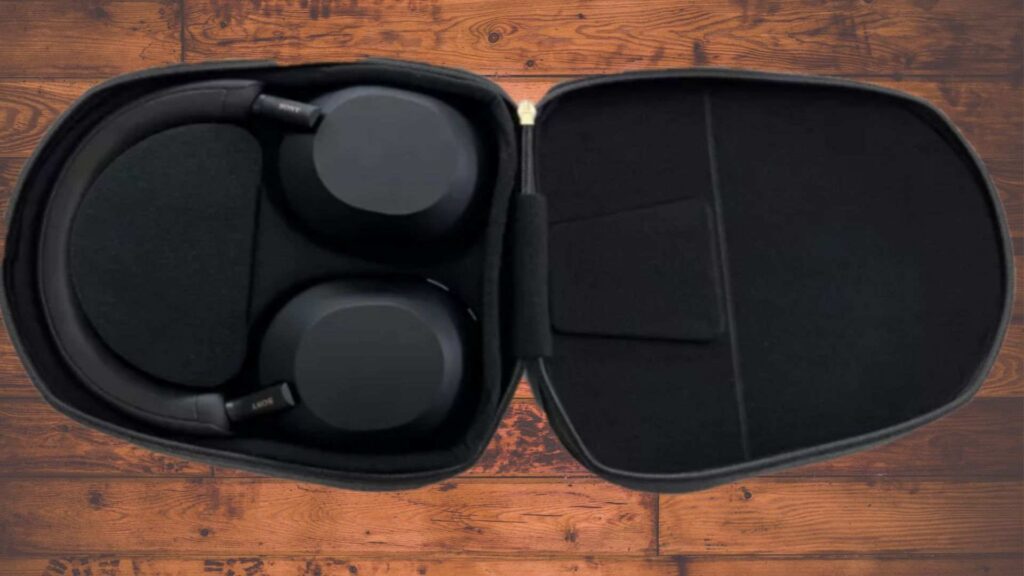
The latest Sony over-ear headphones come with a carrying case, which is something that customers always like. It is made of grey fabric and can be folded in half, giving you a little extra space in your bag while you use your headphones. Just remember that it won’t fold up to the size of a piece of paper because it has a pouch on the inside for storing cables, so it won’t be as thin as paper. Even though its volume can be made smaller, the new case has more surface area than the older ones, even though its volume is smaller.
Audio quality of the Sony WH-1000XM5
- a large soundstage
- supporting spatial audio
- LDAC and DSEE Extreme operate efficiently.
- Excellent balance, strong bass, and fascinating detail
A clear and enjoyable sound
Sony has once again made it possible for music fans of all kinds, including audiophiles, to enjoy excellent sound quality. The sound signature of the WH-1000XM5 is designed to give the bass a little more attention without making it sound too harsh. Aside from that, the sound quality is great and there is a lot of sound staging. Because of the nice sound separation, you can tell which instrument is playing which sound.
Because the sound quality of the XM5 is so good, you won’t have to turn up the volume all the way to enjoy what you’re listening to. Even 80% volume was a stretch when I was outside, but I could never turn up my headphones’ volume to more than 50% when I was inside. We will talk about how important ANC is in this situation.
The sound quality of the Sony WH-1000XM5 is both clear and enjoyable.
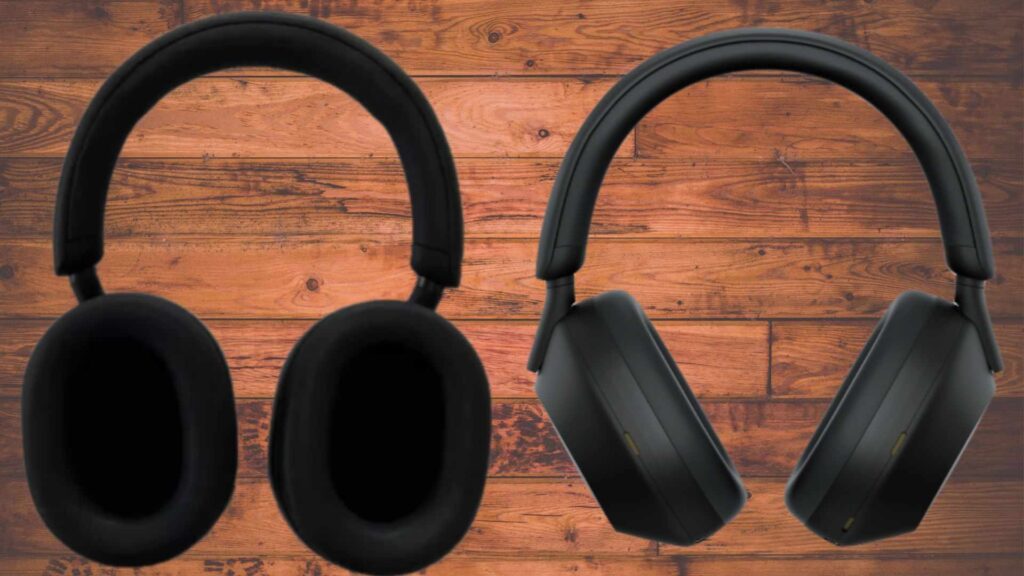
Sony is once again relying on a one-two punch consisting of both the LDAC codec and support for DSEE Extreme to deliver the best sound quality from all of your connected devices. The high-resolution audio option you have is called LDAC, and it dynamically compresses and decompresses music to provide a lot more wireless bandwidth than a typical Bluetooth connection can. DSEE Extreme is able to squeeze out a little bit more detail, though, by applying AI upscaling algorithms to recover part of the audio data that would otherwise be lost, even if you are using a streaming service with a meager standard resolution through Bluetooth. With other streaming platforms, this would not be possible. They both do a fantastic job.
Even after the driver was changed, the soundstage was still big enough to give each part of a mix the space it needed to stand out and breathe. Think about the fierce solo in Metallica’s famous song “One.” Even though it is full of double bass drum chaos and thrash metal riffs, Kirk Hammett’s fierce high-register finger tapping stands out and shines. Jeff Buckley’s Grace is a quieter, more complicated song where a strolling bassline and soaring strings can work together. In this song, the strummed acoustic guitar has room to sit next to the soaring strings and also makes a rattling sound under the harmonized vocals and chorus-pedal guitar line. Even when you’re not using the 360 Reality Audio spatial settings, the Sony WH-1000XM5 headphones give you a great sense of immersion because everything in the soundscape is in the right place.
We immediately raised an eyebrow when the WH-1000XM5 headphones switched from the 40mm driver used in the WH-1000XM4 headphones to a new 30mm driver. Would the smaller driver compromise the WH line’s characteristic dynamic and spaciousness? We are glad to inform that these concerns were unfounded; they sound roughly on par with the excellent XM4s, but we must admit that they do not sound significantly better than those speakers either.
If you want a good example of how tight the bass is, “Bullet in the Head” by Rage Against the Machine is about as good as it gets. The way Tim Commerford plays the bass makes the song move like a machine with pistons. The WH-1000XM5s let the bassline back up the high-pitched guitar riff without making the rest of the sound sound flat. The ominous song “Angel” by Massive Attack shows that even at the lowest frequencies, the WH-1000XM5 cans keep their melody and clarity. Listen to this song to find out how low the cans can go without losing definition.
By going to the other end of the emotional spectrum, Prince’s happy Raspberry Beret brought out details that had been missed before. This is the best example of Prince’s “more is more” production style from the 1980s. Snapping snares and hand claps break up the wizard-like blend of synths, strings, and guitars. If I’m not mistaken, what looks like a harpsichord is sitting under everything else. If that’s the case, I’ve heard this song for 35 years and have never noticed that before.
Aside from that, almost no sound gets through. Sitting next to a coworker in the office, they said that even with the volume turned all the way up, they couldn’t hear anything. This is a big improvement over last year’s edition.
It’s rare for a high-end pair of headphones to have smaller drivers than the one it replaces, but Sony made that choice. The 30mm dynamic transducers used in the XM5 are made of carbon fiber and are 25% smaller than those used in the XM4. Although Sony claims they sound even better, the adjustment also makes the XM5 lighter.
Superior noise suppression and a considerably enhanced microphone
With its eight microphones (four on each earcup), HD Noise Cancelling Processor QN1, and features like Auto NC Optimizer, the Sony WH-1000XM5 has very good noise cancellation. I was impressed by the results on the inside and on the outside. I tried it out in different places, like my room, an outdoor gallery near a busy road, a local train, and an airplane.
The ANC does a great job of making fans and air conditioners much quieter inside. Even though there is no music playing, you can still hear some noise because not everything is completely quiet. But as soon as you play music, even at a low volume of 30%, all the background noise goes away, letting you fully enjoy the song.
Call quality of WH-1000XM5
The XM5 excels in this regard to a far greater degree than its predecessor, as well as, possibly, the other rivals that I have discussed at various points during this review. It is astonishing how well the on-board computers are able to distinguish your speech from the surrounding noise, even when the noise is really loud. They are able to accomplish this feat without the compression and muddiness that are typically associated with this type of algorithmic magic, and there is only the barest hint of harshness when the system is pushed to its limits.
Battery life of the Sony WH-1000XM5
In any case, these numbers are more than plenty for even the longest of journeys, including airplane trips. On the other hand, if you have access to a USB Power Delivery (PD) charger, you will be able to do a lightning-fast rapid charge on the XM5 that will provide you with an additional three hours of entertainment in only three minutes. It’s true that one minute is equivalent to one hour.
Both the XM4 and the XM5 have almost the same specifications, including a continuous playing time of 30 hours with ANC enabled, and either 38 (for the XM4) or 40 (for the XM5) without it. To the best of my knowledge, those figures seem to be spot-on correct. Although Sony does not specify how big of a blow these statistics would take when utilizing LDAC, based on my previous experience, you may anticipate it to devour up to forty percent of the total.
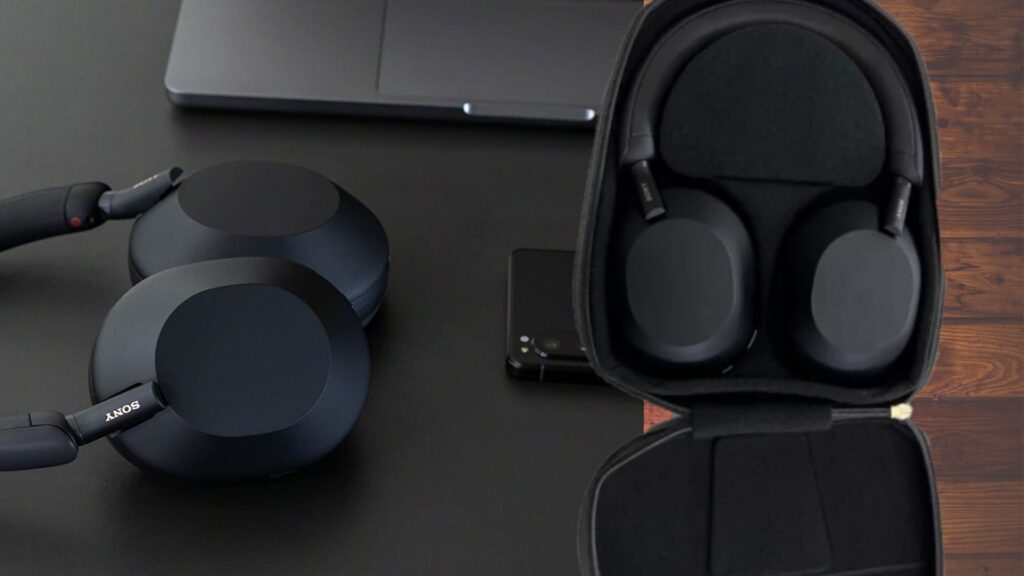
Do the playback predictions from Sony seem right? Even though we didn’t quite get 30 hours of use with ANC on, our experience makes us think that the claims are mostly true. This could be because we often turn the volume up louder than most people do, or even louder than is considered safe. Because of this, we would expect the battery to die faster because of the high volume.
People thought that the Sony WH-1000XM4s might have improved in their battery life because there weren’t many other ways they could have done so. Sony says that the WH-1000XM5s will last 40 hours without noise canceling on. This is an improvement of two hours over the WH-1000XM4s, which lasted 30 hours with noise canceling on and 40 hours without it. Some of our readers might be a little disappointed by this, since our competitors are getting better at making their batteries last longer on a single charge. The quality of the other features, especially their ability to block out background noise, more than makes up for any flaws in this area, and 30 to 40 hours of playback time is more than enough to be considered good anyway.
But Sony has worked hard to make the whole process of charging better. The USB-PD standard can be used to charge the headphones, and after just three minutes of charging, they can play for three hours. If you do this, you can get out of the house and start listening to music as soon as possible.
Is it worth it to buy the Sony WH-1000XM5 Wireless Headphones?
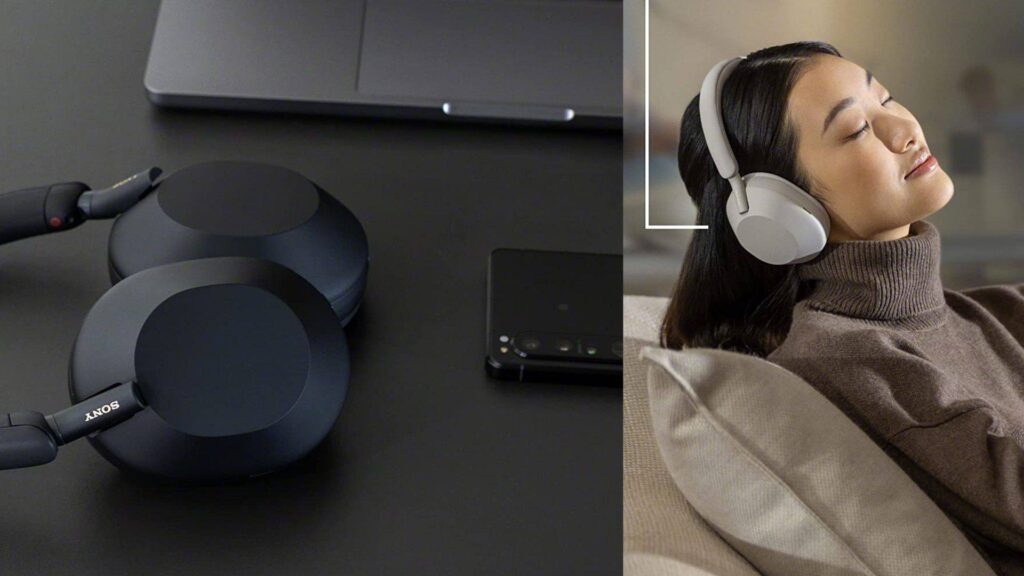
How long will they last?
Always a challenging topic, but Sony is known for producing high-quality goods, and the WH-1000XM5 headphones appear like they can withstand a fair amount of wear and tear. Because they do not have an IPX rating, it is best not to expose them to moisture of any type, including sweat and rain. If you follow my advice, I have no doubt that you will continue to appreciate them many years from now. The WH-1000XM5 comes with a standard warranty from Sony that lasts for one year.
You may buy
- You desire the best active noise-cancelling functionality and sound quality available.
- You value intelligent, AI-powered software settings
- You desire headphones that are considerate of your time, health, and the environment.
The Sony WH-1000XM5 headphones’ range may have plateaued a little, but they still stand at the top of the pack. Even though they are more expensive than earlier models in the lineup, these most recent Sony over-ear ANC headphones continue to be the best that money can now buy.
The Sony WH-1000XM5 headphones can anticipate exactly what you want them to do without you having to press a button, whether that be pausing your music when you take them off your head, turning down the volume when you’re having a conversation, or turning off noise canceling features when you’re on a busy road. Additionally, compared to earlier versions, these intelligent features feel snappier and more responsive.
The Sony WH-1000XM5 headphones charge rapidly so that you may return to your music as soon as possible. Their app also does an excellent job of raising your awareness of the harm that listening to loud music can do to your hearing if it is not kept in check. Similar to how the shell and packaging for the headphones were built, sustainability was a consideration.
You may not buy
- You prioritize portability beyond everything else
The WH-1000XM5 headphones, in contrast to earlier generations, do not have the ability to fold in on themselves so that they may be more conveniently transported in a suitcase. Because of this, they take up quite a deal of space when it comes time to put them away. Keep this in mind if you’re in the market for a set of headphones that are genuinely portable, and if you’re looking for a pocketable option, Sony’s WF-1000XM4 in-ear headphones are an ideal choice.
According to Sony, the WH-1000XM4 will not be discontinued immediately and will be available for purchase alongside the WH-1000XM5 after its release. Because of this, the price of the 1000XM4 headphones is likely going to hit an all-time low in the very near future. Because of the very little difference in performance between the two sets, purchasing the older headphones at a lower price would be your best choice overall.
Although the new WH-1000XM5 headphones include some noteworthy upgrades in design and active noise cancellation (ANC) quality, the gap between the new model and the previous one is not so wide as to suggest an upgrading.
Yes, of course, Sony’s WH-1000XM5 wireless headphones are now the best wireless headphones that can be purchased, and as a result, the company sells them for an unusually high price.
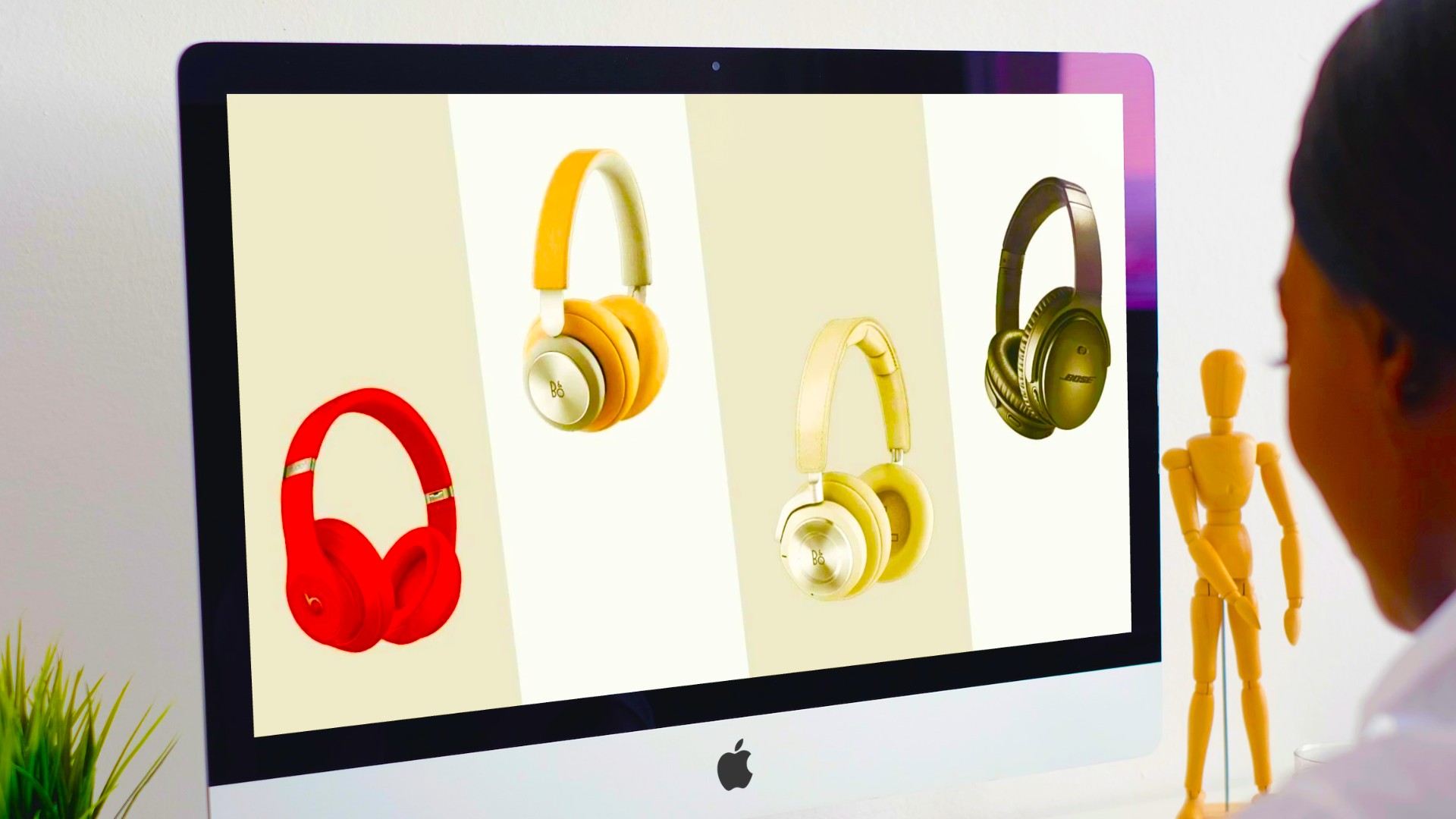
Learn more about the top headphones on the US market.



